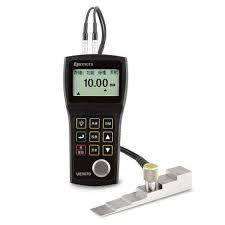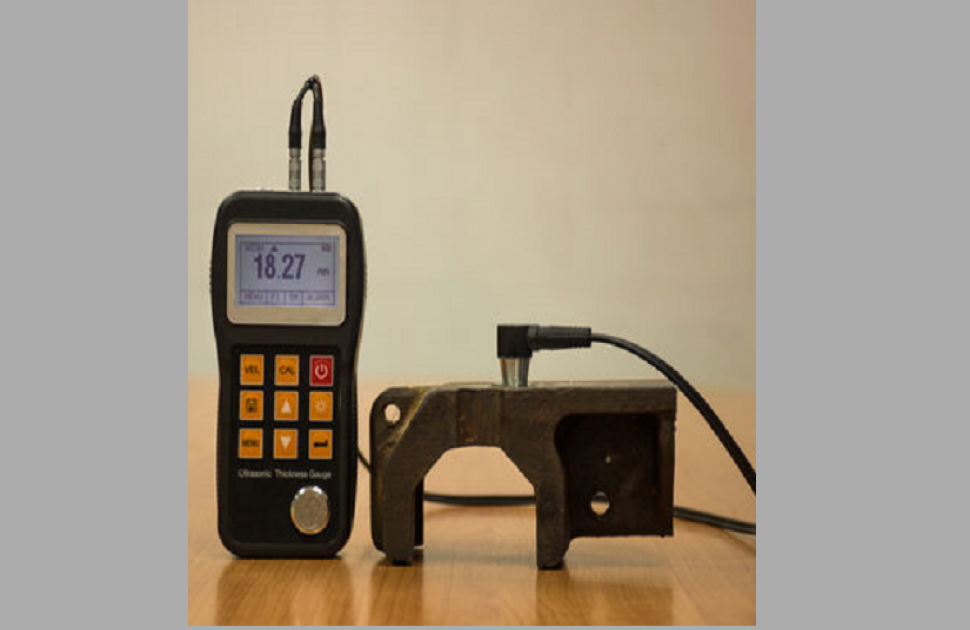Table Of Contents
- Introduction
- Applications of Ultrasonic Thickness Gauges
- Types of Transducers
- Advantages of Ultrasonic Thickness Gauges
Introduction
Ultrasonic thickness gauges, also known as ultrasonic thickness measurement devices, are indispensable tools used across a wide array of industries.
These instruments utilize ultrasonic waves to precisely determine the thickness of materials without causing any damage.
They are a cornerstone of Non-destructive Testing (NDT) procedures, ensuring the safety, durability, and quality of materials subjected to corrosion or erosion.
Applications of Ultrasonic Thickness Gauges
Ultrasonic thickness gauges find applications in diverse scenarios, including:
- Maritime Industry
- Maritime Industry
In the maritime sector, ultrasonic steel thickness gauges are extensively used to evaluate the thickness of steel in boats and offshore constructions.
This is vital for maintaining the structural integrity of vessels and offshore platforms in corrosive marine environments.
- Pipeline Inspection
Ultrasonic thickness testing equipment is pivotal for inspecting the thickness of oil and gas Pipelines.
These pipelines often span vast distances and are subjected to extreme conditions, making regular assessment crucial for preventing leaks and ensuring reliability.
- Manufacturing
Ultrasonic wall thickness gauges play a pivotal role in manufacturing.
They are employed to test the thickness of walls and molds, guaranteeing the quality of a wide range of products.
These gauges are versatile and capable of assessing the ultrasonic thickness measurement of various materials, including thin metals, ceramics, and glass.
- Material Verification
Ultrasonic thickness meters have the unique capability to verify the authenticity of materials.
By leveraging their knowledge of the speed of sound through metals, owners of NDT thickness gauges can determine whether an artifact is indeed made of the claimed material, providing a valuable tool for fraud detection.
Types of Transducers
Ultrasonic thickness gauges employ different Types of Ultrasonic Transducers for various applications.
Corrosion gauges with dual element Transducers are the primary examination tool used to measure components like:
- Oil and gas pipelines
- Power pressure vessels
- Storage tanks
- Numerous other applications
These transducers ensure robust measurements in demanding environments.
On the other hand, precision gauges utilize single-element transducers.
These are preferred when Ultrasonic Testing thickness measurement requires the highest degree of accuracy.
Common applications include testing the ultrasonic thickness measurement of thin metals and a variety of non-metals like ceramic and glass.
Advantages of Ultrasonic Thickness Gauges
The advantages of Ultrasonic Thickness Gauges include the following:
- Accessibility
Unlike some testing methods, ultrasonic thickness testing does not require access to both sides of the material, making them adaptable to various situations.
- No Limitations Due to Coatings
These gauges can work effectively around coatings and linings, making them ideal for real-world inspection scenarios where materials are often protected by coatings.
- High Precision
Ultrasonic thickness gauges are renowned for their precision, with measurements accurate to a degree of 0.1mm or less, depending on the device.
This level of accuracy is essential for ensuring the safety and quality of materials.
- Ease of Use

Despite their advanced technology, these gauges are designed to be user-friendly and can be operated with relative ease by technicians in the field.
With knowledge of the speed of sound through metals, owners of Ultrasonic thickness gauge Non-destructive Testing (NDT) equipment can determine whether an artifact is indeed made of the metal described by the owner.
References
1. NDT.Com
2. NDT KITS









